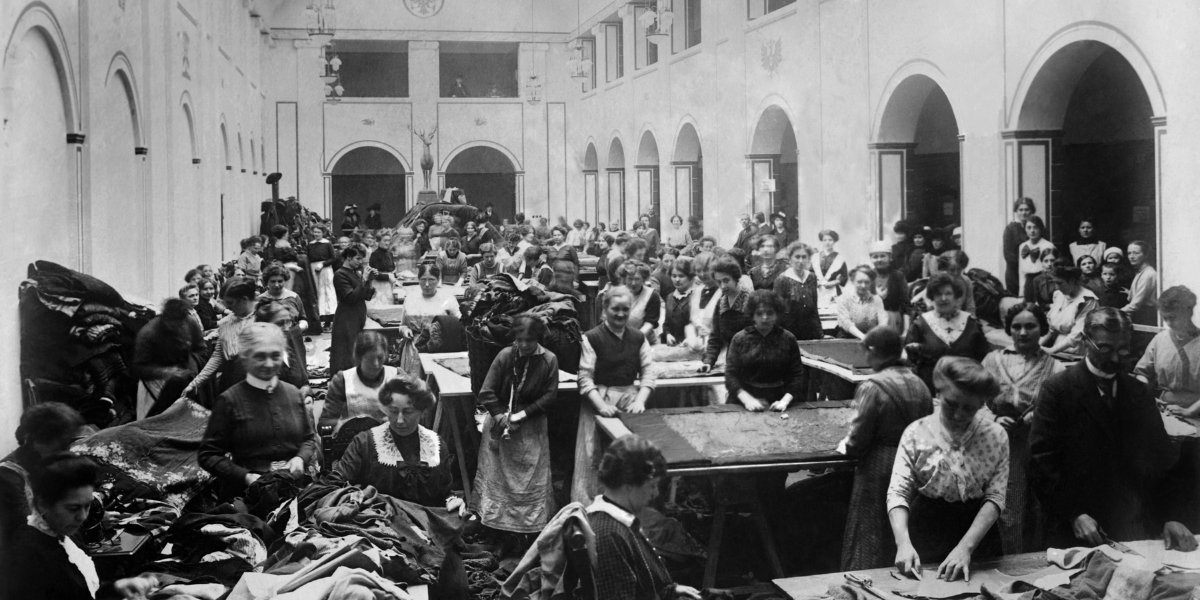We use cookies to improve your experience on our website and to personalise the content shown to you. By clicking 'Accept' you are accepting our cookie policy. You can personalise your options within your browser settings.

Fabrics, the unsung heroes of our daily lives, have a rich and dynamic history. From the clothes we wear to the upholstery we use, fabrics have been an integral part of human civilisation for thousands of years. This blog post will take you on a journey through the history and origin of fabrics, revealing 12 fascinating facts you may not know.
The first evidence of woven textiles dates back to early civilisations, from Mesopotamia to Ancient Egypt and the Indus Valley. These ancient societies mastered the art of weaving, creating intricate designs on looms using natural fibres like flax and hemp. This marked the beginning of the textile industry, a testament to human ingenuity and creativity.
China's silk production initiated around 8,500 years ago during the Neolithic period, showcased unparalleled mastery. The delicate process of silk weaving began with silkworm cultivation, followed by a meticulous process of thread extraction. This lustrous fabric, representing luxury and prestige, forged trade links named the ‘Silk Road’, connecting the East and West.
Wool cloth possesses ancient roots, with artefacts from archaeological sites dating back to 4000 BC. Revered for its warmth, durability, and versatility, wool was shepherded across continents, from Europe's chilly terrains to the Middle East's deserts. Its adaptability made it a staple in wardrobes, irrespective of societal hierarchies.
Research by archaeologists indicates that the practice of dyeing textiles can be traced back to the New Stone Age, starting around 10,200 BC. Throughout history, fabric dyes were mainly derived from organic materials like roots, leaves, berries, bark, wood, and even fungi. In China, records from approximately 5,000 years ago show that dyes were produced using insects, plants and tree bark. Now, of course, most dyes used today are synthetically produced due to improvements in quality and the scale of demand.
The tale of cotton textiles is as vibrant as its dyes. India, a pioneer in cotton cultivation since 3000 BC, employed traditional fabric production methods, utilising natural extracts like indigo and turmeric for colouring cotton fabrics. These naturally dyed fabrics soon caught the attention of foreign traders, making India a renowned hub for cotton exports.
The European medieval age, a period of knights and nobility, showcased a fabric palette echoing versatility and luxury. Leather, linen, wool, silk, and fur were the mainstays, each with distinct roles. While leather and wool offered protection, silk signified opulence. These medieval fabrics mirrored the era's socio-cultural landscape, where attire distinguished peasants from princes.
The Renaissance marked a revival of art, culture, and innovation. As Europe transitioned to the Renaissance, there was a discernible shift in fabric tastes. Renaissance fabrics revelled in luxury, with velvets, brocades, and lace adorning the elite. The increased use of opulent materials, intricate embroidery, and the infusion of gemstones in fabric design encapsulated the grandeur of the period.
Originating as a durable cotton twill textile for workers, denim fabric's story is both robust and refined. Its roots trace back to 17th century Nîmes, France, coining the term “denim” from ‘de Nîmes’. Over time, its global appeal evolved, transitioning from workwear to a fashion staple loved for its durability and versatility.
The Industrial Revolution in the 18th and 19th centuries heralded an era of unparalleled innovation for textile industries. While textile production was previously home-based, fabric history innovations like the spinning jenny and the power loom transitioned it into large factories. There was a shift from manual, time-consuming processes to rapid mass production, fuelling economic growth and social change.
As the 20th century dawned, the world witnessed a revolutionary departure from natural fibres. With the advent of manufactured fibres, innovators developed synthetic fabrics like crude artificial silk, one of the first human-made textiles created from cellulose. These initial innovations paved the path for materials such as nylon and rayon, democratising access to textiles while reducing dependency on natural resources.
The invention of polyester fabric in the 1940s marked another milestone in the history of textiles. As a completely synthetic fibre, it provided cost-efficiency, durability, stretch, wrinkle resistance, and ease of mass production. Its versatility, from clothing to home furnishings, made it a household name, challenging the dominance of traditional natural fibres.
The fabric innovations of the 20th century didn’t end there, with the introduction of highly resistant synthetic rubber. This material, foundational for stretchable fabrics, impacted numerous sectors, from more comfortable and aerodynamic sportswear to healthcare, exemplifying adaptability and progress.
The history of textiles is a fascinating journey marked by innovation and creativity. From the ancient fabrics and looms of Mesopotamia to the synthetic materials of the 20th century, each thread tells a story of human ingenuity and progress.
At I Want Fabric, we celebrate this rich history, offering a wide range of fabrics, from traditional silks to contemporary synthetics. We invite you to explore our collection of fabrics, upholstery, and sewing supplies and appreciate the history behind each thread.